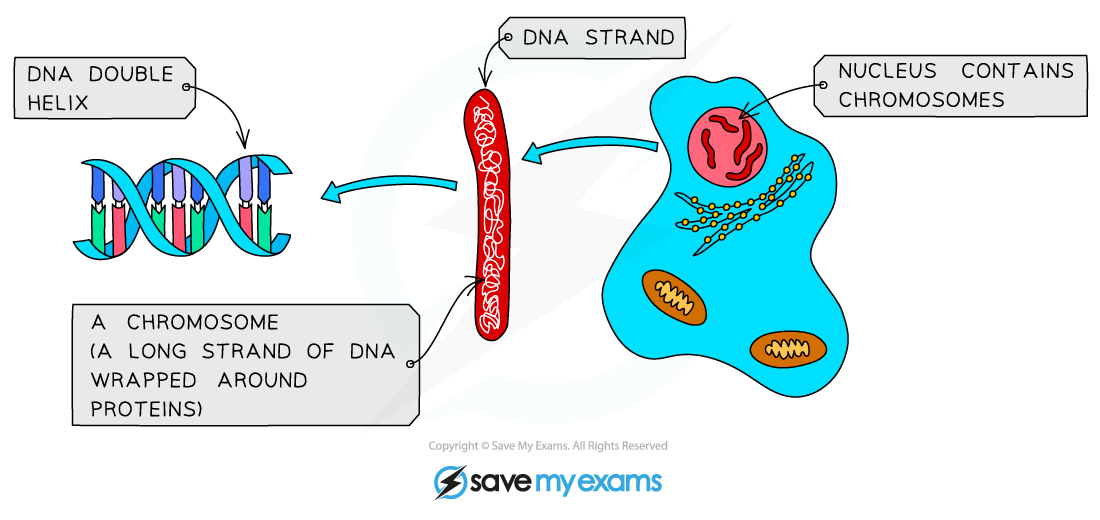DNA Structure & Function (SQA National 5 Biology): Revision Note
Exam code: X807 75
DNA structure
DNA (deoxyribonucleic acid) is a molecule that contains genetic information; it is the encoded instructions for making proteins
DNA is found in the nucleus of cells in structures called chromosomes

The double helix and base pairs
DNA consists of a double-stranded helix held together by base pairs
The four different bases present in DNA are:
adenine (A)
cytosine (C)
thymine (T)
guanine (G)
The bases within DNA always pair up as follows:
adenine always pairs with thymine (A-T)
cytosine always pairs with guanine (C-G)
This A-T and C-G pairing pattern is known as complementary base pairing

DNA function
A gene is a section of DNA that codes for a protein
The sequence of bases (A, T, G, C) within a gene determines the sequence of amino acids within a protein
Each sequence of three bases (triplet) codes for one amino acid, e.g.:
CAG codes for the amino acid valine
TTC codes for the amino acid lysine
GAC codes for the amino acid leucine

Examiner Tips and Tricks
You are not required to learn any specific amino acid names or the triplets of DNA bases that code for specific amino acids.

Unlock more, it's free!
Did this page help you?